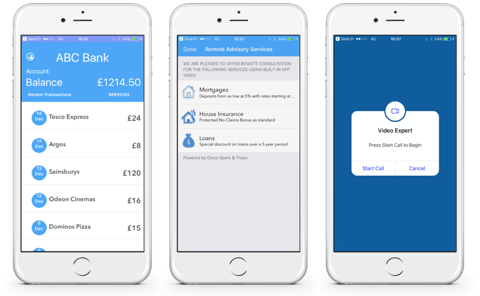Working smarter while we work together. That’s what we’re all about. In fact, it’s this exact idea that forms the foundation of the Cisco Spark Depot, the hub for all Cisco Spark integrations and bots. (See my previous post.)
If you haven’t had a chance to check out the Cisco Spark Depot in the past few weeks, take a few minutes to see all the new additions to the Cisco Spark family.
All these integrations and bots certainly help power up the Cisco Spark platform. But we also understand the importance of simplicity. We want to make it as smooth as possible for our strategic partners and dedicated developer community to access the powerful collaboration features of Cisco Spark.
So that’s what we did. At DevNet Create, we have announced new Cisco Spark SDKs (for iOS and JavaScript) and Cisco Spark widgets for messaging and calling simplify integrating Cisco Spark functionality into all sorts of business applications.
But while the SDKs and widgets both offer new possibilities for third-party integrations, it’s important to note that they serve distinct functions. The SDKs offer an impressive amount of user interface flexibility, while the widgets are the simplest, fastest way to get something up and running.
The widgets extend the Cisco Spark user experience with features like 1:1 messaging and 1:1 voice/video calls. They can also connect to Cisco Spark spaces. With the widgets, we’ll instantly push new Cisco Spark features or enhancements to you. The SDKs also support 1:1 voice/video calls, but their big benefit is a completely customizable UI for creating truly integrated experiences.
 Say a developer working on a banking app wants to use Cisco Spark’s secure communication capabilities to allow users to message or talk directly with the support team. Until now, the developer had to send app users outside of the banking application to complete the connection. Thanks to recent changes, they can now keep customers within the application. Simple, smooth, convenient.
Say a developer working on a banking app wants to use Cisco Spark’s secure communication capabilities to allow users to message or talk directly with the support team. Until now, the developer had to send app users outside of the banking application to complete the connection. Thanks to recent changes, they can now keep customers within the application. Simple, smooth, convenient.
And that’s just one example. The functionality enabled by these SDKs and widgets could support applications within healthcare, sales and marketing, task management, retail, and even remote tech support or mobile service-worker use cases.
Both the SDKs and the widgets leverage WebRTC, which means your users never need to download any browser plug-ins. And all the code for these projects is completely open-source, so anyone can contribute and keep up-to-date with recent releases.
Find more, including Getting Started guides for each of the widgets and SDKs, on the Cisco Spark SDKs and Widgets page.
Think about all the ways you can unlock smarter ways to work together with our new Cisco Spark widgets and SDKs. We are planning even more features so be sure to follow @CiscoSparkDev on Twitter to keep up with our news.


Super easy to embed widgets!!
Great stuff. Easy to develop and use.
Wow! This looks like a game changing capability!
It would be great to integrate Spark with Cisco Nexus via APIs in order to execute commands orally